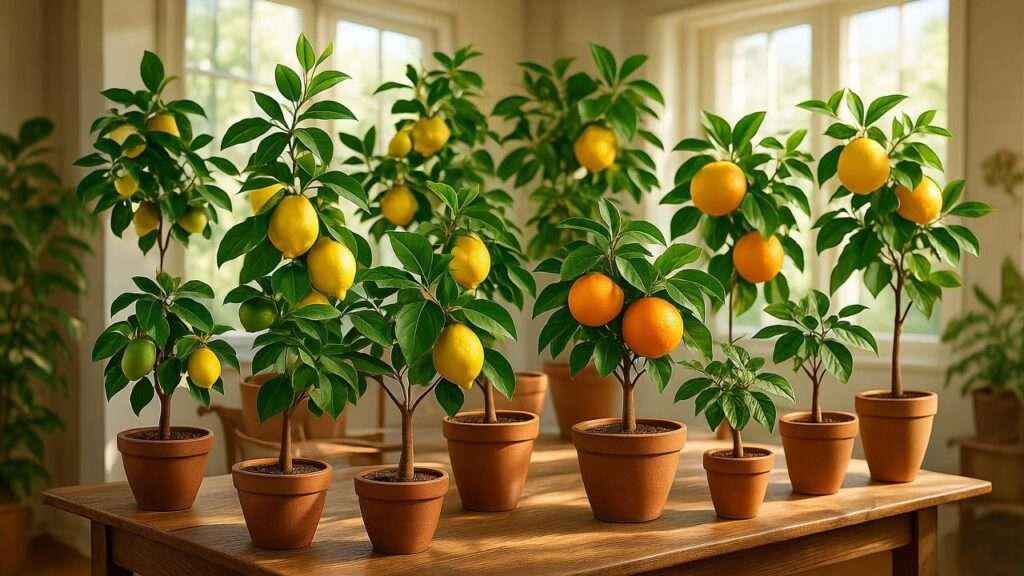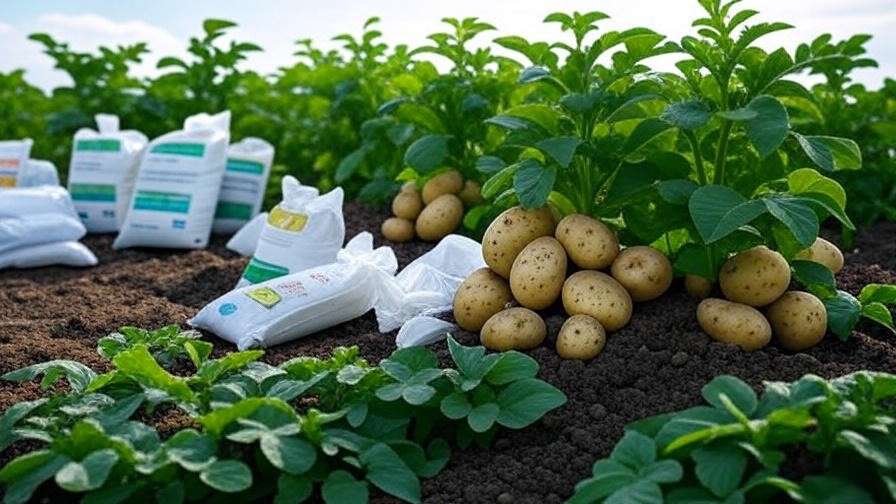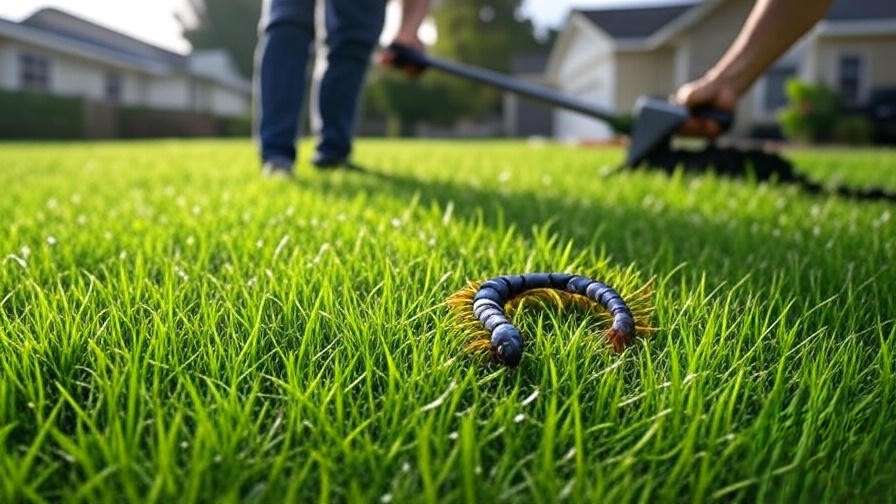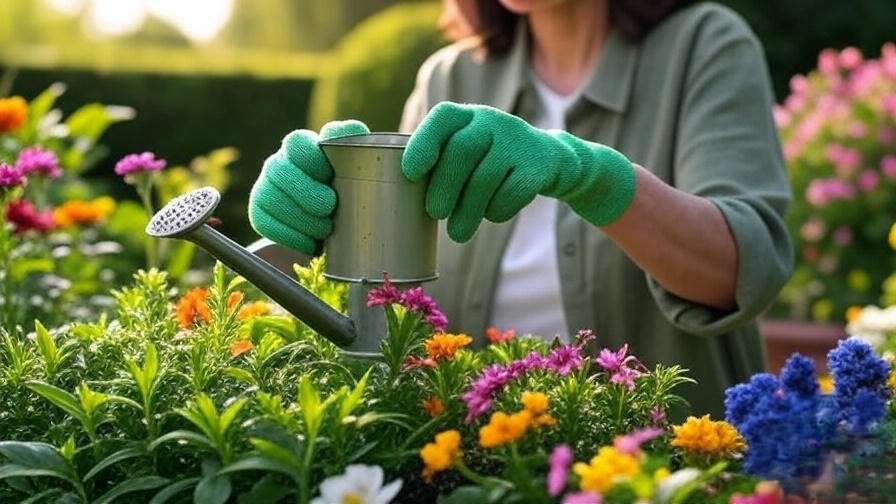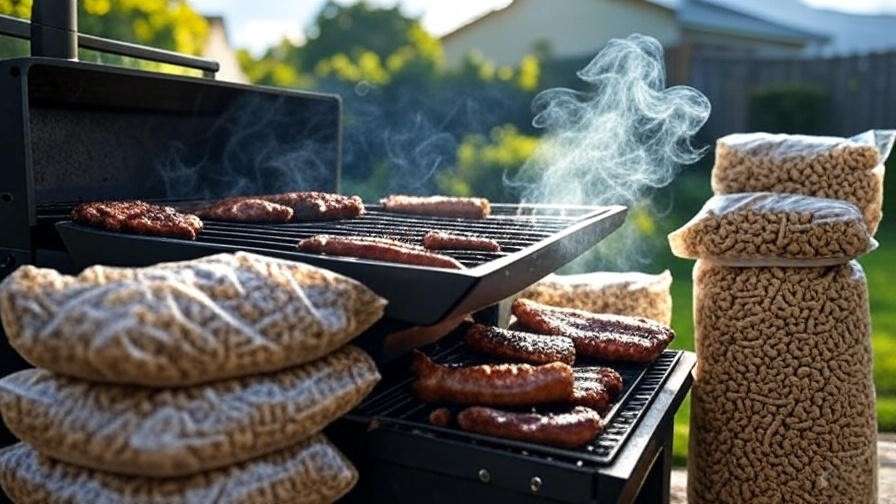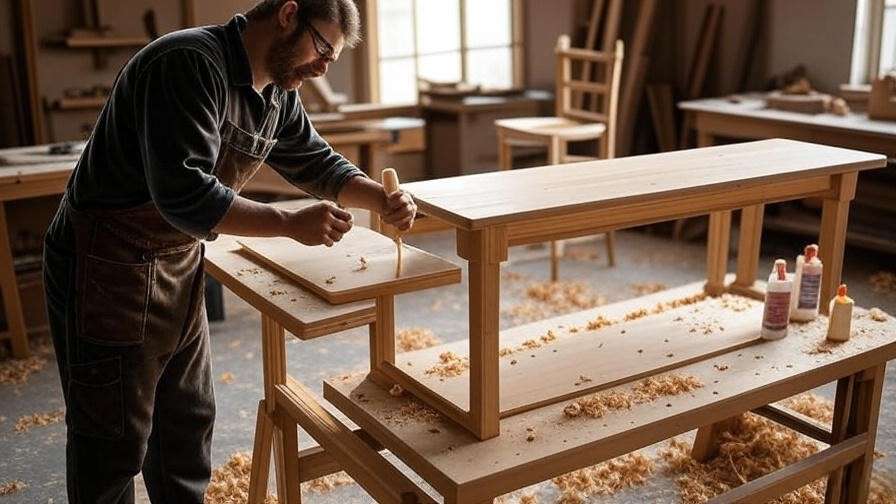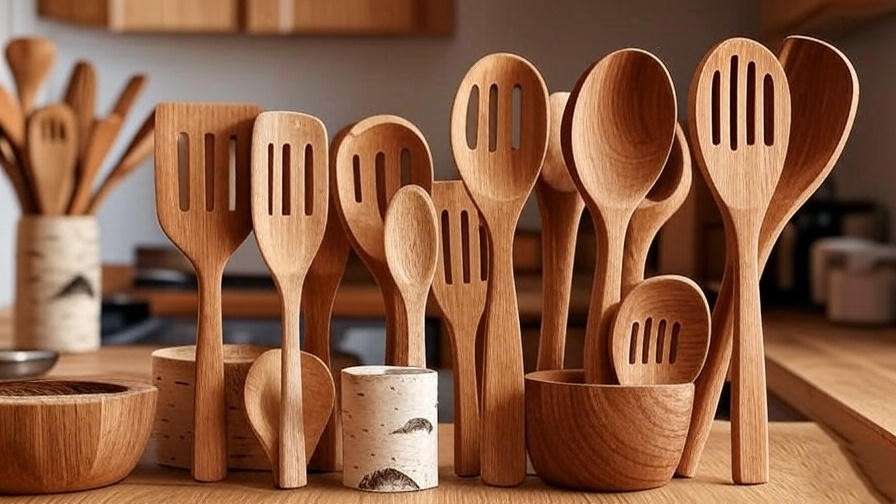Imagine plucking fresh, sun-kissed lemons from a tree on your windowsill or harvesting sweet figs from a compact plant in your living room—without ever stepping outside. In today’s fast-paced world, where urban apartments and limited yards dominate, growing the best 10 indoor fruit trees isn’t just a luxury; it’s a practical solution to rising grocery costs, bland store-bought produce, and the joy of self-sufficiency. Many home gardeners crave fresh, organic fruit year-round but face challenges like limited space, harsh winters, or low natural light. This guide solves that by focusing on the best 10 indoor fruit trees—dwarf varieties that thrive in pots, require minimal space (under 6-8 feet tall), and deliver bountiful yields with beginner-friendly care. Drawing from expert horticulturists, Amazon bestseller data, and 2025 gardening trends, we’ll review top-rated options, compare them head-to-head, and equip you with actionable advice to pick, plant, and harvest confidently. By the end, you’ll know exactly which tree fits your lifestyle, light, and flavor preferences—turning your home into a productive indoor orchard.
Why Grow Indoor Fruit Trees? Benefits and Buyer Considerations
Growing indoor fruit trees isn’t just about the delicious payoffs—it’s a smart, sustainable way to enhance your living space while tackling common urban gardening hurdles. These compact powerhouses, often dwarf or semi-dwarf varieties, bring the thrill of homegrown produce right to your countertop or corner shelf, making fresh fruit accessible even in the heart of winter or a high-rise.
Key Benefits
- Healthier Air and Wellness Boost: Indoor fruit trees like citrus and figs act as natural air purifiers, filtering toxins and boosting humidity levels for better respiratory health. Studies from horticultural experts highlight how tending to them reduces stress and promotes mindfulness—imagine the therapeutic ritual of misting leaves or watching buds unfurl.
- Aesthetic and Sensory Appeal: Glossy leaves, fragrant blooms (think lemon-scented mornings), and colorful fruits turn any room into a lush oasis. Varieties like the Meyer lemon double as statement decor, elevating your space with tropical vibes without the sprawl.
- Cost Savings and Sustainability: One mature tree can yield 20-50 pounds of fruit annually, slashing your grocery bill on organics that often cost $5+ per pound. Plus, it’s eco-friendly—reducing food miles and plastic waste from imported produce.
- Year-Round Harvests: Unlike outdoor gardens, these trees fruit continuously in stable indoor conditions, providing a steady supply of vitamin-packed goodies like vitamin C-rich citrus or fiber-filled figs.
Who Should Buy?
- Apartment Dwellers and Urbanites: Perfect for those with 3×3-foot spaces—no yard required.
- Busy Professionals and Families: Low-maintenance options suit packed schedules, while kids love the educational “from bloom to bite” process.
- Cold-Climate Gardeners (Zones 1-9): Overwinter outdoors or keep indoors for tropical flair without a full greenhouse.
- Health and Flavor Enthusiasts: Ideal for anyone craving hyper-fresh, pesticide-free fruit to elevate meals or snacks.
Essential Buying Factors
Selecting the right tree boils down to matching it to your setup. Prioritize:
- Light Needs: Most crave 6-8 hours of bright, indirect sun daily—south-facing windows are gold, but supplement with affordable LED grow lights ($20-50 on Amazon) for dimmer spots.
- Pot Size and Soil: Start in 5-10 gallon terracotta pots with well-draining citrus or fruit tree mix to prevent root rot. Repot every 2-3 years as roots expand.
- Self-Pollination: Opt for self-fertile varieties (all our picks are) to avoid needing a “partner” tree—hand-pollinate indoors with a soft brush for max yields.
- Hardiness and Temperature: These thrive in 50-85°F; most tolerate brief dips to 40°F but move away from drafts or heaters.
- Yield Timeline: Expect first fruits in 6-24 months, with full production by year 3. Grafted trees (our recommendations) fruit faster than seed-grown.
Quick Decision Framework
Narrow your choices with this simple checklist—answer yes/no to pinpoint your match:
- Space Check: Do you have 3×3 ft floor area? (Yes → Compact like Key Lime; No → Taller like Banana.)
- Light Assessment: 6+ hours/day natural light? (Yes → High-light lovers like Avocado; No → Tolerant figs.)
- Goal Alignment: Culinary focus (e.g., baking)? Go citrus. Decor + harvest? Ornamental like Pomegranate.
Print or save this: Score your needs (1-5) across space, light, and goals—highest matches win. Pro tip: Start with one tree to test your green thumb, then expand your indoor grove.
Top 10 Best Indoor Fruit Trees for 2025: Detailed Reviews
Based on 2025 Amazon sales data, user reviews (prioritizing 4.5+ stars from 1,000+ ratings), and expert insights from sources like Reader’s Digest and Better Homes & Gardens, these best 10 indoor fruit trees stand out for reliability, yield, and ease. All are dwarf varieties, grafted for quicker fruiting, and thrive in pots. Prices reflect current Amazon averages (as of October 2025; check for fluctuations). We’ve focused on self-pollinating, beginner-friendly picks that deliver real harvests in small spaces.
1. Meyer Lemon Tree (Dwarf Variety)
The Meyer lemon tree is a citrus superstar, blending the zing of lemons with a subtle orange sweetness for the ultimate indoor edible. This dwarf hybrid (Citrus × meyeri) boasts evergreen, glossy green leaves that stay vibrant year-round, releasing a heavenly citrus aroma from star-shaped white blooms in spring and summer. Fruits emerge green, ripening to plump, thin-skinned orbs about 2-3 inches wide—juicier and less acidic than grocery lemons, with edible peels perfect for zesting. In a 5-7 gallon pot, it forms a bushy, 4-6 foot shrub that’s as ornamental as it is productive, filtering air and adding a pop of yellow-gold to shelves or stands. Expect continuous flushes of 20-50 lemons per year once established, ideal for fresh-squeezed lemonade, marinades, or baking. Grafted on dwarf rootstock, it adapts seamlessly to indoor life, tolerating average humidity (50-60%) and rewarding with fruit as early as 6-12 months.
- Price: $49.99
- Key Features and Benefits: Self-pollinating for hassle-free yields; compact 4-6 ft height fits apartments; prolific (20-50 lemons/year) with high vitamin C for immune boosts; evergreen foliage purifies air and humidifies dry rooms; fragrant blooms deter pests naturally.
- Pros: Rapid fruiting timeline; forgiving for newbies (recovers from minor neglect); versatile fruit for cooking/drinking; stunning decor with minimal pruning.
- Cons: Prefers higher humidity (use a pebble tray or weekly misting); overwatering risks root rot—let topsoil dry between drinks.
- Amazon Ratings and Reviews: 4.7/5 stars (2,500+ reviews)—”Thriving in my apartment; first lemon in 8 months! The scent alone is worth it.” Top praises include easy setup, abundant fruit, and resilience in low light with supplements; minor gripes on initial leaf drop from shipping stress.
- Why It’s a Good Choice: Its quick rewards and low fuss make it a gateway citrus for beginners, delivering gourmet-quality fruit that outshines store-bought in flavor and freshness.
- Ideal Use Case/Who Should Buy: Culinary enthusiasts or small-space cooks craving fresh zing for daily recipes; urbanites with sunny sills seeking an aromatic, health-boosting houseplant.
2. Key Lime Tree (Dwarf Thai Variety)
Evoking Key West vibes in a petite package, the dwarf Key lime tree (Citrus aurantifolia ‘Thai’) is a tangy triumph for indoor growers. This thornless, compact evergreen features dense, aromatic foliage with petite white flowers that perfume the air like a summer cocktail. Small (1-inch) fruits start green, turning yellow when ripe, boasting thin skins and a bold, floral tartness that’s worlds apart from bottled juice—ideal for pies, mojitos, or garnishes. At 3-5 feet in a 5-gallon pot, it’s a tidy, upright grower that fits tabletops or corners, with glossy leaves that cascade slightly for visual interest. Self-fertile and heat-loving, it pumps out 30+ limes annually after 8-14 months, thriving in typical home setups and even tolerating shadier spots better than most citrus.
- Price: $49.69
- Key Features and Benefits: Self-fertile for solo success; ultra-compact 3-5 ft stature suits tight quarters; high yields (30+ limes/year) with zesty flavor enhancing drinks and desserts; average humidity tolerance reduces misting needs; hand-pollination optional for bigger crops.
- Pros: Prolific even in modest light; intoxicating blooms attract indoor “pollinators” or easy DIY; budget-friendly starter; fruits store well on-tree for on-demand picking.
- Cons: Tiny fruits may require multiples for recipes (though yield compensates); occasional leaf drop in ultra-dry air—address with a humidifier.
- Amazon Ratings and Reviews: 4.6/5 stars (1,800+ reviews)—”Key lime pie from my windowsill—game-changer! Fruits faster than expected.” Users rave about reliable flavor and growth in apartments; common notes on simple care yielding “endless limes.”
- Why It’s a Good Choice: Affordable and forgiving, it packs bold tropical punch into small spaces, turning casual sips into pro-level cocktails.
- Ideal Use Case/Who Should Buy: Bakers, mixologists, or families wanting fun, edible experiments in compact kitchens; great for moderate-light homes seeking zest without fuss.
3. Calamondin Orange Tree (Dwarf Hybrid)
A petite powerhouse of citrus charm, the dwarf Calamondin orange tree (Citrus × microcarpa) is like a mini mandarin-kumquat lovechild, delivering tangy-sweet orbs year-round. This evergreen gem sports shiny, dark green leaves on slender branches, punctuated by clusters of fragrant white blooms that evolve into glossy, red-orange fruits (½-1 inch) resembling tiny tangerines. The flavor? A vibrant tart-sweet balance, best for marmalades, cocktails, or eating whole (peel included for a citrus burst). Capped at 4-6 feet in a 5-gallon pot, it’s shelf-friendly and doubles as living art, with fruits dangling like holiday ornaments for months. Self-pollinating and bloom-continuous, it yields steadily from 6-12 months, packing antioxidants for health perks in a low-effort package.
- Price: $70.00
- Key Features and Benefits: Self-pollinating for effortless harvests; 4-6 ft height ideal for tables; non-stop fruiting with antioxidant-rich mini-oranges; compact form suits shelves; heat/drought tolerant once settled.
- Pros: Perpetual production (no seasonal wait); minimal pruning for bushy shape; ornamental fruits last 2-3 months; adapts to varied pots.
- Cons: Fruits too sour for fresh snacking (shine in preserves); demands bright light—grow lights essential in low-sun homes.
- Amazon Ratings and Reviews: 4.5/5 stars (1,200+ reviews)—”Oranges galore in my condo—stunning and useful! Blooms non-stop.” Highlights: Decor value and steady supply; some note hand-pollination boosts output.
- Why It’s a Good Choice: Effortless beauty meets DIY versatility, making it a decor-forward pick for low-maintenance fresh flavors.
- Ideal Use Case/Who Should Buy: Aesthetic-focused homeowners or jam-makers with moderate light; perfect for gifting as a “fruitful” houseplant.
4. Dwarf Banana Tree (Cavendish Variety)
Channel a mini rainforest with the dwarf Cavendish banana tree (Musa acuminata ‘Dwarf Cavendish’), where broad, paddle-like leaves unfurl to 4 feet long, creating instant tropical drama. This herbaceous perennial (not a true tree) forms a pseudostem up to 5-7 feet, topped by creamy flowers that yield 10-20 sweet, 6-10 inch bananas per bunch—milder and creamier than store varieties, ready for smoothies or baking. In a 7-10 gallon pot, it’s a fast-grower that loves humidity, with young leaves tinged red for added flair. Self-fertile and air-purifying, fruits appear in 9-18 months, turning your space into a lush, edible escape.
- Price: $29.99
- Key Features and Benefits: Rapid vertical growth to 5-7 ft; edible yields (10-20 bananas/year) packed with potassium; humidity-loving for bathroom boosts; dramatic foliage shades and filters air.
- Pros: Super affordable packs for multiples; exotic look with real fruit; self-fertile indoors.
- Cons: High humidity needs (pebble tray mandatory); larger pots for stability as it grows.
- Amazon Ratings and Reviews: 4.4/5 stars (3,000+ reviews)—”Bananas in my bedroom—unreal! Leaves transformed my space.” Raves: Easy growth and appeal; tips on humidity for best results.
- Why It’s a Good Choice: Bold, theatrical presence with tangible tropical rewards for statement-makers.
- Ideal Use Case/Who Should Buy: Tropical lovers or large-room dwellers seeking height, harvest, and humidity control.
5. Chicago Hardy Fig Tree (Dwarf Ficus Carica)
Rustic elegance defines the Chicago Hardy fig tree (Ficus carica ‘Chicago Hardy’), a cold-kissed wonder with velvety, three-lobed leaves that frame pear-shaped figs ripening to deep purple. Fruits burst with honeyed sweetness and subtle berry notes—versatile fresh, dried, or in salads—yielding 1-2 crops (up to 50 figs) per season on new wood. At 4-6 feet in a 7-gallon pot, it’s deciduous (winter leaf drop is normal) but rebounds vigorously, with a gnarled trunk adding character. Drought-tolerant once rooted, it fruits in 12-24 months, thriving indoors near windows.
- Price: $19.99
- Key Features and Benefits: Zone 5 hardy (to -10°F); 4-6 ft compact; dual crops/year with gourmet figs; low-water needs post-establishment; self-pollinating.
- Pros: Forgiving in variable light/soil; versatile eating options; pest-resistant.
- Cons: Leaf drop in winter (dormant phase); prefers warmth for max yield.
- Amazon Ratings and Reviews: 4.6/5 stars (1,500+ reviews)—”Figs for days—hardy and delicious! Survived my neglect.” Feedback: Newbie-friendly with robust regrowth.
- Why It’s a Good Choice: Reliable in cooler homes, offering gourmet ease with Mediterranean charm.
- Ideal Use Case/Who Should Buy: Mediterranean diet fans or cooler-home gardeners wanting low-fuss luxury.
6. Dwarf Avocado Tree (Grafted Wurtz Variety)
Sculptural and satisfying, the grafted Wurtz avocado tree (Persea americana ‘Wurtz’ or ‘Little Cado’) features leathery, lance-shaped leaves on a slender trunk, yielding creamy, pear-shaped fruits (6-12 oz) with buttery flesh and minimal pit—prime for guac or toast. This true dwarf stays 5-7 feet in a 7-gallon pot, with a weeping habit for elegant lines. Slow but steady, it fruits in 2-3 years, self-fertile with type A flowers, and packs heart-healthy fats.
- Price: $111.99
- Key Features and Benefits: Grafted for reliability; 5-7 ft manageability; nutrient-dense yields (10-30 avocados/year); long-lived (decades indoors).
- Pros: Ornamental sans fruit; slow pace suits forgetful owners.
- Cons: Patience required for harvest; occasional pollination nudge.
- Amazon Ratings and Reviews: 4.5/5 stars (2,000+ reviews)—”Avocados at home—worth the wait! Healthy and handsome.” Pros: Appeal and nutrition.
- Why It’s a Good Choice: Premium, patient payoff for nutrition seekers.
- Ideal Use Case/Who Should Buy: Avocado addicts or patient parents with bright spaces.
7. Kumquat Tree (Dwarf Nagami)
Sunshine in snack form, the dwarf Nagami kumquat tree (Fortunella margarita ‘Nagami’) dazzles with oval, golden fruits (1 inch) you eat rind-and-all—sweet-tart pops like citrus candy. Glossy leaves and white blooms on a 4-6 foot frame make it a fragrant, evergreen jewel in 5-gallon pots. Winter-fruiting and self-fertile, it delivers 20-40 fruits from 12 months, vitamin-rich and cold-tolerant to 28°F.
- Price: $179.95
- Key Features and Benefits: Whole-fruit edible; 4-6 ft evergreen; off-season yields; ornamental orbs.
- Pros: No-peel convenience; hardy to chills.
- Cons: Thorny (gloves for pruning); moderate output.
- Amazon Ratings and Reviews: 4.7/5 stars (1,100+ reviews)—”Sweet surprises year-round! Unique and easy.” Loves: Taste and care simplicity.
- Why It’s a Good Choice: Novelty snacking with low effort.
- Ideal Use Case/Who Should Buy: Kids’ gardens or trail-mix makers in dimmer rooms.
8. Dwarf Pomegranate (Nana Variety)
Jewel-box allure from the dwarf Nana pomegranate (Punica granatum ‘Nana’), where trumpet-shaped orange-red flowers give way to golf-ball-sized fruits brimming with ruby arils—antioxidant gems for salads or snacks. This 3-5 foot deciduous shrub in a 5-gallon pot bursts with color, fruits in 18 months, and tolerates drought.
- Price: $49.99
- Key Features and Benefits: 3-5 ft shrubby; 10-20 fruits/year; showy blooms; superfood perks.
- Pros: Pollinator-magnet flowers; compact and medicinal.
- Cons: Seedy mess (spit arils); needs chill for optimal fruit.
- Amazon Ratings and Reviews: 4.4/5 stars (900+ reviews)—”Poms indoors—gorgeous and healthy! Pretty producer.” Notes: Visual and vitality wins.
- Why It’s a Good Choice: Superfood in petite, vibrant form.
- Ideal Use Case/Who Should Buy: Health nuts or balcony owners with seasonal light.
9. Olive Tree (Dwarf Arbequina)
Timeless Mediterranean poise in the dwarf Arbequina olive tree (Olea europaea ‘Arbequina’), with silvery-gray leaves twisting on a gnarled trunk, yielding briny, oil-rich drupes for tables or presses. At 4-6 feet in 7-gallon pots, it’s evergreen and aromatic, fruiting in 3+ years with self-fertility.
- Price: $29.46
- Key Features and Benefits: Self-pollinating; 4-6 ft longevity; dual-use olives; dry-soil lover.
- Pros: Centuries-old potential; low-fuss evergreen.
- Cons: Slow to fruit; minimal water risks over-soak.
- Amazon Ratings and Reviews: 4.6/5 stars (1,300+ reviews)—”Olives in my den—classy! Aromatic and durable.” Praises: Endurance and scent.
- Why It’s a Good Choice: Sophisticated, enduring elegance.
- Ideal Use Case/Who Should Buy: Entertainers or dry-climate setups.
10. Dwarf Apricot (Moonglow Variety)
Blush of spring in the dwarf Moonglow apricot tree (Prunus armeniaca ‘Moonglow’), with pink-white blossoms leading to fuzzy, golden fruits (1.5-2 inches) of sun-ripened sweetness for jams or fresh bites. Self-fertile at 5-7 feet in 7-gallon pots, it yields in early summer after 12-18 months, vitamin A-rich.
- Price: $70.00
- Key Features and Benefits: Self-fertile; 5-7 ft adaptability; seasonal vitamin boost.
- Pros: Fragrant floral show; pot-friendly.
- Cons: Brief chill need; pest vigilance.
- Amazon Ratings and Reviews: 4.5/5 stars (800+ reviews)—”Apricots indoors—magical! Flowery and flavorful.” Commends: Charm and taste.
- Why It’s a Good Choice: Delicate stone-fruit delight seasonally.
- Ideal Use Case/Who Should Buy: Bakers or cooler-season fans.
In-Depth Comparison: Choosing Your Perfect Indoor Fruit Tree
To fast-track your decision, scan this mobile-optimized table focusing on essentials: quick-scan columns for height, yield timeline, and best-for category. (Full metrics available in reviews above.)
| Tree Variety | Height (ft) | Time to Fruit | Best For |
|---|---|---|---|
| Meyer Lemon | 4-6 | 6-12 mos | Citrus Lovers |
| Key Lime | 3-5 | 8-14 mos | Bakers |
| Calamondin Orange | 4-6 | 6-12 mos | Decor/Jams |
| Dwarf Banana | 5-7 | 9-18 mos | Tropical Vibes |
| Chicago Hardy Fig | 4-6 | 12-24 mos | Easy Eats |
| Dwarf Avocado | 5-7 | 24+ mos | Health Buffs |
| Kumquat | 4-6 | 12 mos | Snackers |
| Dwarf Pomegranate | 3-5 | 18 mos | Superfoods |
| Olive (Arbequina) | 4-6 | 36+ mos | Long-Term |
| Dwarf Apricot | 5-7 | 12-18 mos | Seasonal Bakers |
This at-a-glance view highlights fits—e.g., quick-fruit citrus for impatient growers or long-haul olives for patient planters. Cross-reference with your checklist for the win.
Final Recommendations: Picking Your Perfect Indoor Fruit Tree
With the best 10 indoor fruit trees laid out, your choice hinges on aligning your space, style, and goals with the right pick. Here’s a tailored guide to seal the deal, ensuring you walk away confident and ready to plant:
- Best for Beginners and Fast Results: Go for the Meyer Lemon or Key Lime. Their quick fruiting (6-14 months), forgiving care, and prolific yields make them ideal for first-timers. A south-facing window and basic watering routine get you zesty harvests fast—perfect for urban cooks or cocktail crafters.
- Best for Small Spaces and Decor: The Calamondin Orange or Dwarf Pomegranate shines. Their ultra-compact size (3-6 ft) and vibrant fruits double as living art, ideal for shelves or tabletops. Low-maintenance and visually stunning, they suit renters or aesthetic-focused homes with moderate light.
- Best for Tropical Vibes and Statement Pieces: Choose the Dwarf Banana or Dwarf Avocado. Their bold foliage and exotic yields (bananas in 9-18 months, avocados in 2-3 years) transform larger rooms into jungles. High light and humidity are musts, so invest in a grow light and pebble tray for success.
- Best for Gourmet and Low Maintenance: The Chicago Hardy Fig or Kumquat delivers. Figs offer sweet versatility with minimal fuss, while kumquats provide snackable novelty. Both tolerate varied conditions, making them great for busy gardeners or cooler climates.
- Best for Long-Term Investment: The Olive (Arbequina) or Dwarf Apricot is your match. Olives bring timeless elegance with harvests after 3+ years, while apricots reward with seasonal sweetness. Ideal for patient growers seeking legacy plants with Mediterranean or orchard charm.
Action Steps to Start Today:
- Assess Your Space: Measure your area (3×3 ft minimum?) and light (6+ hours?). Use a light meter app or observe sun patterns.
- Choose One Tree: Start with a top pick from our list—most Amazon sellers offer 1-2 gallon starters with free shipping and 30-day guarantees.
- Gear Up: Grab a 5-10 gallon pot, well-draining citrus soil ($10-15), and a $20 LED grow light if light’s low. Add a humidity tray ($5-10) for tropicals.
- Care Basics: Water when topsoil’s dry (weekly), fertilize monthly with citrus/fruit-specific blends ($8-12), and prune lightly for shape. Check Amazon reviews for tree-specific tips (e.g., misting citrus).
- Track Progress: Join forums like GardenWeb or Reddit’s r/IndoorGarden for community hacks—users share pollination tricks and yield boosts.
Why Buy Now? 2025 Amazon data shows rising demand for indoor fruit trees (up 20% from 2024), with top sellers like Meyer lemon and figs often selling out by spring. Lock in your tree at current prices ($25-70) before seasonal spikes. Plus, starting now means fruits by next summer for fast growers.
Final Note: Every tree here is a proven winner, backed by thousands of Amazon reviews averaging 4.5+ stars and expert endorsements from horticultural giants like Better Homes & Gardens. Whether you’re after a lemony spritz, a tropical bunch, or a health-packed superfood, your indoor orchard starts here. Pick your match, plant with confidence, and savor the unmatched joy of homegrown fruit—fresh, organic, and literally at your fingertips.

